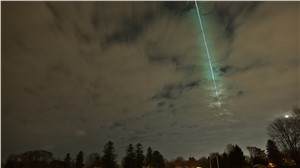
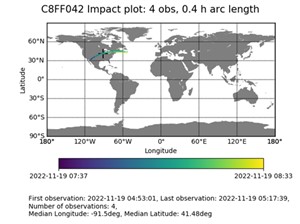
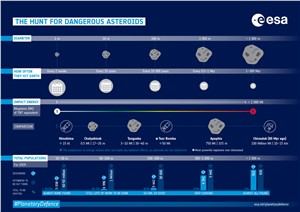
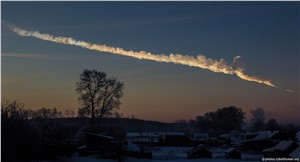
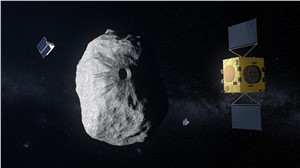
Sixth sense
The initial discovery of asteroid 2022 WJ1 came from the Catalina Sky Survey – one of the major projects dedicated to the discovery and follow-up of near-Earth objects (NEOs) – at 04:53 UTC (05:53 CET) on 19 November 2022, just under four hours before impact.
The new asteroid was first imaged by Catalina's 1.5-m Mt. Lemmon telescope, and once four observations were made it was reported to the Minor Planet Centre (MPC), 38 minutes after initial detection, at 05:31 UTC.
These four observations were enough to map out the asteroid’s path in the sky, and within a few minutes of this ‘astrometry’ being published, ESA's own internal monitoring software reported that the object had a ~20% chance of Earth impact, possibly hitting somewhere in North America in the next two to three hours. A few minutes later, other impact monitoring programs also sent alerts outlining a similar scenario.

By Orbit Type (LEO, MEO, GEO, Others), by Architecture (Transparent Payload, Regenerative Payload), by Service Type (Fixed Satellite Service, Mobile Satellite Service, Broadband Satellite Service, Others), by End-User (Telecommunication, Government, Defense, Aviation, Others) and Region, with Forecasts from 2025 to 2034
Download free sample pagesFollowing the potential impact notifications, observers at Catalina and elsewhere across the US got follow-up observations of the new asteroid. Less than 30 minutes from the initial trigger, the impact was confirmed with excellent precision: the small asteroid, likely less than a meter in diameter, was going to impact somewhere between Lake Erie and Lake Ontario, near the US-Canada border, around 08:27 UTC (09:27 CET).
At exactly the predicted time, a ~1-m asteroid struck the atmosphere becoming a brilliant fireball above the expected location. Find out more about this event at ESA’s Near-Earth Object Coordination Centre (NEOCC) web portal.
Asteroid impact: what’s the risk?
Because of how the Solar System formed, small objects are in the majority in terms of their total population. It is estimated there are 40-50 million little asteroids and ‘just’ 1 000 of the biggest, giant ‘planet-killers’. The rest fall somewhere in between.
We currently know of more than 1.1 million asteroids, although many more are out there. Of those discovered, about 30 600 travel in an orbit that brings them near Earth’s own. These are the ‘near-Earth asteroids’ (NEAs).
The reassuring news is that almost all the giant asteroids have been found – more than 95% – and none are of concern for the next hundred years. Astronomers are tirelessly searching for every last one.
Small, metre-sized asteroids strike Earth every couple of weeks. They add to our understanding of asteroid populations, of fireballs and their makeup, but they aren’t a big priority when it comes to Planetary Defence because they pose no real danger.
The objects we are most concerned about are those ‘goldilocks asteroids’ that are large enough to do harm if they impact, and there are enough of them out there that we know, at some point, they will. The infamous Chelyabinsk impact in February 2013 and the Tunguska impact in June 1908 fall into this category, and when it comes to discovering these asteroids, there’s still a lot of work to be done.
That’s why ESA’s Planetary Defence Office is planning new telescopes on the ground and missions in space to improve our asteroid detection abilities, sending the Hera mission to the Dimorphos asteroid struck by NASA’s DART mission to test asteroid deflection, as well as working with the international community to prepare for the scenario in which a bigger asteroid is discovered on a collision course.